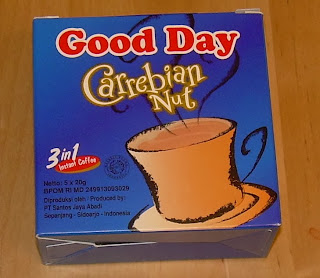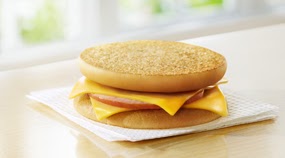Last week, I reviewed a package of rice crackers that I bought at a discount store. As my regular readers may recall, I did not review it favorably. It cost me about 80 cents, and I may or may not finish the package. Chances are that I will do so, albeit slowly. I'll probably find a way to "doctor" the crackers with some other spice (likely some flavored popcorn salt) in order to make them more enjoyable.
Why would I go to all of this trouble for some sub-par rice crackers? The reason is that I grew up poor and was taught that one did not waste food. I grew up poor enough that there were times when I was hungry and fished through the cabinet for food and came up with uncooked spaghetti noodles to eat. I remember chowing down on them (and finding them rather difficult to eat) because whatever was available otherwise was not something at that age that I could figure out what to do with. There may have been other food in the house, but I was too young to cook it.
I do not mean to indicate that my family starved or anything, but there were ebbs and flows to our food supply based on how far back the next paycheck had been received. Of course, this was at a time when food was not nearly as cheaply available nor was there as much shelf stable or ready to eat food around as there is now. Food was not something we just had around in abundant supply or threw away blithely and, at least the latter, is not something I would do now.
Getting back to those rice crackers though, I thought about them again not because 2/3 of the package is still waiting to be eaten, but because of the umpteen number of articles that I read about food waste in America. Reports say that "Americans" waste up to 40% of their food. I've heard about food waste many times, but I never scratched the surface on how this statistic is arrived at. Thinking about my less than tasty rice crackers sheds some light on this, as did a little research.
First, let's think about shops like "Big! Lots" in the U.S. and comparable stores in Japan. I can only speak about these two countries because I've lived for over 20 years in each and don't have similar experiences in other places. In Tokyo, there were very few shops that sold food that wasn't especially popular at reduced rates. The closest I came to them was
Okashi no Machioka and Okashi no Marche. Even those shops didn't sell
only discounted snacks or food. They also sold newer things. I think this is because Japanese people are a lot less open to buying old food than Americans as they value quality over price.*
In the U.S., I've encountered numerous outlets selling food and other items at a discount. Some are beyond their sell-by dates and others are just simply not great products overall.
Those Peakal rice crackers that I reviewed are the sort of thing that no one would buy twice. Their ultimate fate, beyond the discount stores that slash their prices, is to become a part of food waste statistics when even "Big! Lots" can't sell them for less than a dollar to the least discerning of customers (which tells you about how picky I am).
I peeled back the label on the 40% food waste number and found that it is not necessarily dubious in and of itself, but that the idea that "Americans" waste so much food is a suspect conclusion. The statistics are derived not based on individual behavior, but on the amount of food available and the amount of food consumed in the U.S. They look at farming, imports, etc. and then calculate what we need to eat based on the number of people and the average number of calories consumed for that number of people. They calculate waste based on what doesn't need to be eaten. It's all a big guess - an educated one - but a guess nonetheless.
If you look under the surface of this, what you're seeing is not that people are tossing out food willy-nilly, but rather that Americans are being offered more food than they need so it is not being consumed. I'm sure that a piece of that is new food products that don't sell by their expiration date and it gets tossed out. Some of it is also based on the ebb and flow of crop levels based on weather and market conditions. This year, kale may be "hot" so the supply of it is largely consumed, but spinach is not because of an unfortunate incident with food poisoning so a lot of what is grown isn't purchased by major manufacturers like "Green Giant" as they don't want to package a lot of frozen spinach that won't be bought by wary consumers.
The picture is often presented as Americans blithely buying and wasting precious food, but that is not what the actual evidence supports. I read a detailed report on how food waste breaks down and the section on "household" food waste - that is, waste that comes from our actual habits - asserts that the average American wastes 25% of edible food. They only tell you at the very end of a lengthy report on why this happens (poor food planning, impulse buying, over-preparation, ignorance of sell-by and expiration dates, etc.) that their number is based not on actual research but "anecdotal evidence". If it's "anecdotal", it's not actually "evidence".
I do believe that people waste food and I even believe that Americans may waste more food than some other cultures, but if we're going to rely on anecdotes, I'm going to tell you that I waste almost no food at all. The fact that I review snacks and a lot of them are not great means that I
should be the sort of person who ends up tossing out a lot of things because they suck, but I try hard not to do that.
One of the ways I avoid throwing away edible food is by finding someone who will eat what I will not. My husband's graduate school is often the recipient of sweets or salted snacks that I don't like. They'll grab anything that you put on the kitchen table at the school and eat it up, especially if it's junk food. I also try to find a way to make a bad snack work by mixing it with something else, warming it up, or cooling it down. Bad Pocky is made better by refrigerating it. Bad mochi is made better by microwaving it. Bad salty snacks can be seasoned or used with dips. Sometimes, I can crumble them up and use them as a coating for other food like chicken or fish.
If I'm going to continue with anecdotes, since that apparently is a valid way of reaching conclusions about American food habits when you publish official papers on such things, I can say that I've been the happy recipient numerous times of food other people didn't want. When a friend of ours moved, we inherited her frozen broccoli and tilapia as well as things like coconut sugar and gluten-free flour. I've also gotten overripe bananas and the food from an overflowing garden from relatives and I've used every bit of it. When our milk approaches its expiration date, I make it into cottage cheese (this is very easy - just boil and add an acid like vinegar or lemon juice - instant and cheap curds). I do not waste food except when it is the most vile concoction or has some serious safety issue.
I should note that I live in a relatively affluent area. The people giving me food are middle class and upper middle class people who are doing it so the food doesn't go to waste because they are mindful about this issue. This isn't the behavior of poor people who grew up as I did, so I think it is important not to conclude that only those who grew up with the occasional empty food cubbard are going to some efforts not to waste food. At least some affluent people think about food waste and avoiding it, tooo.
What I believe is the case is that there are some people who are wasting food, but that the majority of waste is on the supply side and out of the hands of individuals. I think other countries, for various reasons, aren't being sold more than they need. Since America is a consumerist country with a lot of money to throw around, companies want to put things in front of us with the hopes that we'll like them and buy them. Sometimes, they're giving us Sriracha and people go nuts buying it up. Sometimes, they give us Peakal cheese rice crackers and it heads for a landfill. As individuals, I'm not sure we deserve to be tagged as such enormous wasters of food. It may be that "America" sees a lot of food that goes to waste, but that "Americans" aren't necessarily being as excessively wasteful as statistics might indicate.
*
Note: I make no value judgment when I assert this. I think there is nothing noble in valuing quality over price nor anything elitist about it either. It is simply an assertion of a reality and I do not see it as better or worse than any other priority.











































